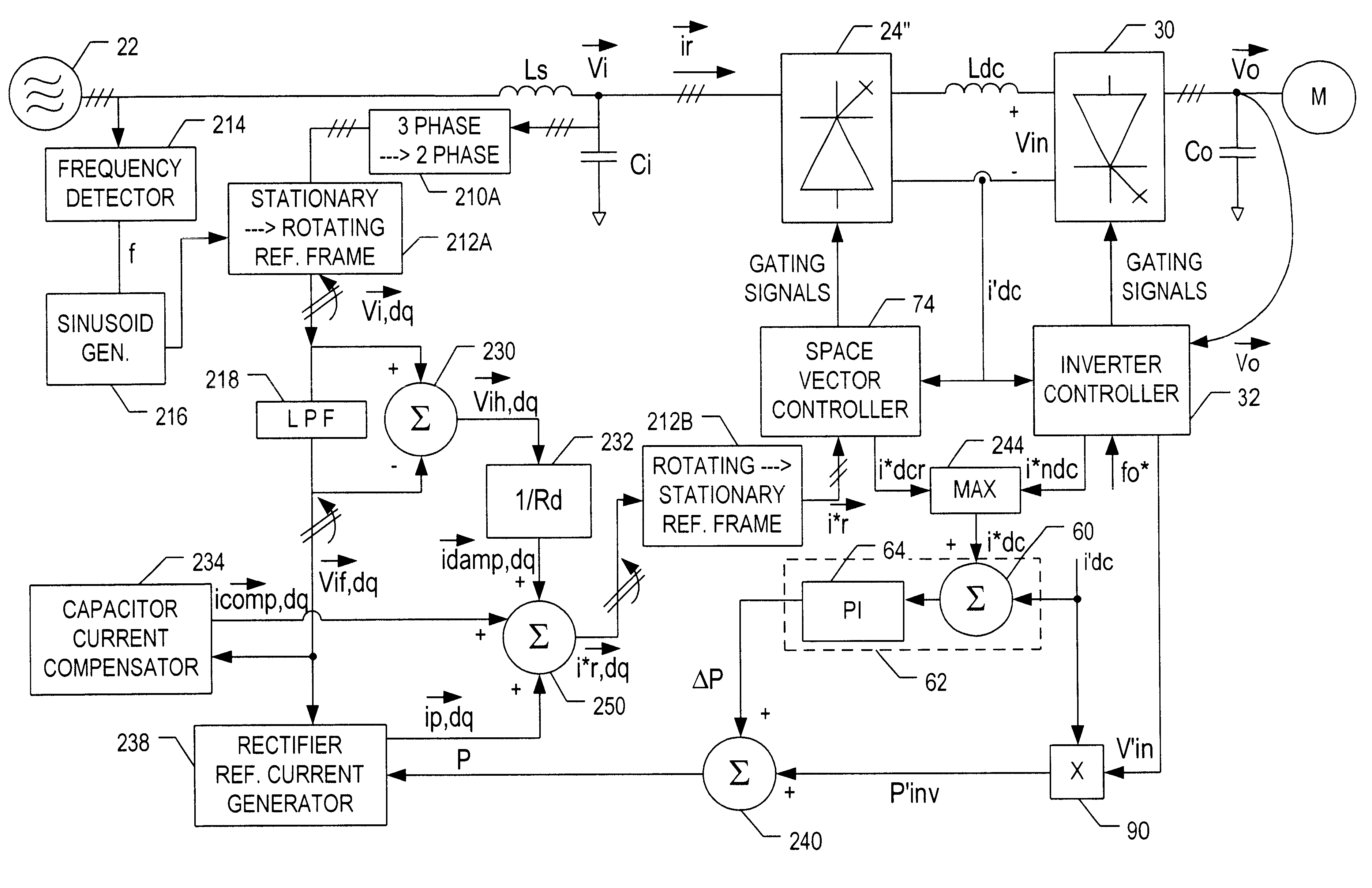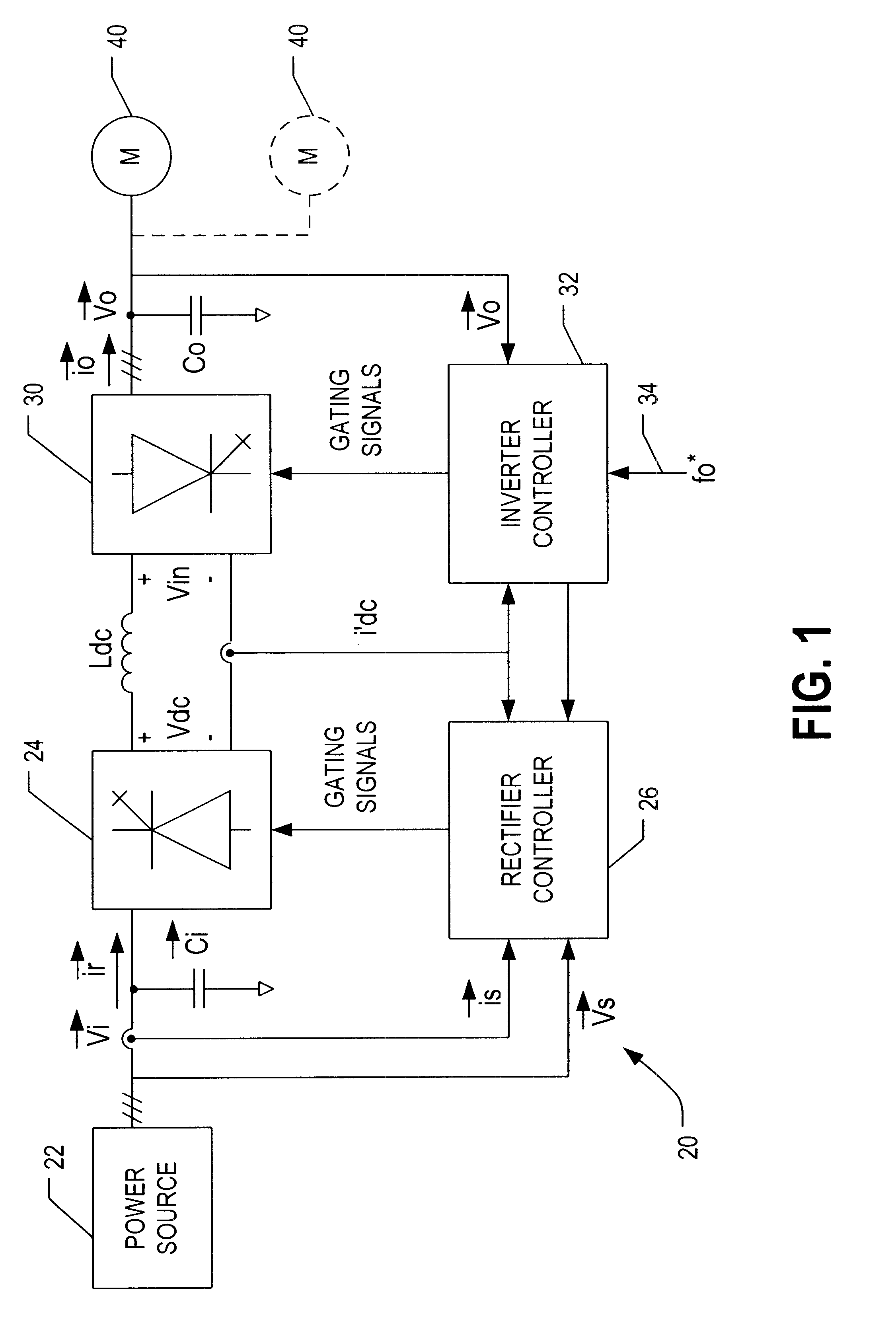PWM rectifier having de-coupled power factor and output current control loops
- Summary
- Abstract
- Description
- Claims
- Application Information
AI Technical Summary
Benefits of technology
Problems solved by technology
Method used
Image
Examples
Embodiment Construction
The detailed description is divided into three parts. The first portion of the discussion relates to active damping control in order to suppress resonance modes. The second part of the discussion centres on the enhancement of CSI-based drives through the use of feedforward control. These portions of the description are also described in co-pending U.S. application Ser. Nos. 09 / 515,289 and 09 / 516,974 and are repeated herein for convenience. The third part of the detailed description focuses on a PWM rectifier having de-coupled power factor and output current control loops and on the use of such a rectifier in an improved CSI-based drive such as discussed in the first two portions of this description.
1. Active Damping Control
Referring to the drawings, FIG. 1 shows a schematic block diagram of a drive 20 for control of one or more a.c. induction motors 40. The drive 20 comprises a rectifier 24 coupled to a current source inverter 30 via a d.c. link choke or inductor L.sub.dc. The recti...
PUM
 Login to View More
Login to View More Abstract
Description
Claims
Application Information
 Login to View More
Login to View More - R&D
- Intellectual Property
- Life Sciences
- Materials
- Tech Scout
- Unparalleled Data Quality
- Higher Quality Content
- 60% Fewer Hallucinations
Browse by: Latest US Patents, China's latest patents, Technical Efficacy Thesaurus, Application Domain, Technology Topic, Popular Technical Reports.
© 2025 PatSnap. All rights reserved.Legal|Privacy policy|Modern Slavery Act Transparency Statement|Sitemap|About US| Contact US: help@patsnap.com



